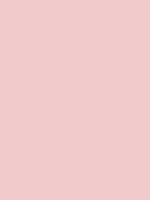#f1cacc Color Information
In a RGB color space, hex #f1cacc is composed of 94.5% red, 79.2% green and 80% blue. Whereas in a CMYK color space, it is composed of 0% cyan, 16.2% magenta, 15.4% yellow and 5.5% black. It has a hue angle of 356.9 degrees, a saturation of 58.2% and a lightness of 86.9%. #f1cacc color hex could be obtained by blending #ffffff with #e39599. Closest websafe color is: #ffcccc.
-
- R 95
- G 79
- B 80
-
- C 0
- M 16
- Y 15
- K 5
● #f1cacc color description : Light grayish red.
#f1cacc Color Conversion
The hexadecimal color #f1cacc has RGB values of R:241, G:202, B:204 and CMYK values of C:0, M:0.16, Y:0.15, K:0.05. Its decimal value is 15846092.
| Hex triplet | f1cacc | #f1cacc |
|---|---|---|
| RGB Decimal | 241, 202, 204 | rgb(241,202,204) |
| RGB Percent | 94.5, 79.2, 80 | rgb(94.5%,79.2%,80%) |
| CMYK | 0, 16, 15, 5 | |
| HSL | 356.9°, 58.2, 86.9 | hsl(356.9,58.2%,86.9%) |
| HSV (or HSB) | 356.9°, 16.2, 94.5 | |
| Web Safe | ffcccc | #ffcccc |
| CIE-LAB | 84.64, 14.043, 4.144 |
|---|---|
| XYZ | 68.294, 65.303, 66.131 |
| xyY | 0.342, 0.327, 65.303 |
| CIE-LCH | 84.64, 14.642, 16.439 |
| CIE-LUV | 84.64, 23.505, 3.595 |
| Hunter-Lab | 80.81, 9.435, 8.048 |
| Binary | 11110001, 11001010, 11001100 |
Color Schemes with #f1cacc
Alternatives to #f1cacc
Below, you can see some colors close to #f1cacc. Having a set of related colors can be useful if you need an inspirational alternative to your original color choice.
#f1cacc Preview
This text has a font color of #f1cacc.
<span style="color:#f1cacc;">Text here</span>This paragraph has a background color of #f1cacc.
<p style="background-color:#f1cacc;">Content here</p>This element has a border color of #f1cacc.
<div style="border:1px solid #f1cacc;">Content here</div>.text {color:#f1cacc;}.background {background-color:#f1cacc;}.border {border:1px solid #f1cacc;}Shades and Tints of #f1cacc
A shade is achieved by adding black to any pure hue, while a tint is created by mixing white to any pure color. In this example, #090203 is the darkest color, while #fdf9f9 is the lightest one.
-
#090203
#090203rgb(9,2,3) -
#190607
#190607rgb(25,6,7) -
#280b0c
#280b0crgb(40,11,12) -
#380f11
#380f11rgb(56,15,17) -
#471315
#471315rgb(71,19,21) -
#57171a
#57171argb(87,23,26) -
#661b1f
#661b1frgb(102,27,31) -
#761f24
#761f24rgb(118,31,36) -
#852328
#852328rgb(133,35,40) -
#95272d
#95272drgb(149,39,45) -
#a42b32
#a42b32rgb(164,43,50) -
#b42f36
#b42f36rgb(180,47,54) -
#c3343b
#c3343brgb(195,52,59)
-
#cc3e46
#cc3e46rgb(204,62,70) -
#d04e55
#d04e55rgb(208,78,85) -
#d45d63
#d45d63rgb(212,93,99) -
#d86d72
#d86d72rgb(216,109,114) -
#dd7c81
#dd7c81rgb(221,124,129) -
#e18c90
#e18c90rgb(225,140,144) -
#e59b9f
#e59b9frgb(229,155,159) -
#e9abae
#e9abaergb(233,171,174) -
#edbabd
#edbabdrgb(237,186,189) -
#f1cacc
#f1caccrgb(241,202,204) -
#f5dadb
#f5dadbrgb(245,218,219) -
#f9e9ea
#f9e9eargb(249,233,234) -
#fdf9f9
#fdf9f9rgb(253,249,249)
Tones of #f1cacc
A tone is produced by adding gray to any pure hue. In this case, #dfdcdc is the less saturated color, while #febdc0 is the most saturated one.
-
#dfdcdc
#dfdcdcrgb(223,220,220) -
#e2d9da
#e2d9dargb(226,217,218) -
#e4d7d8
#e4d7d8rgb(228,215,216) -
#e7d4d5
#e7d4d5rgb(231,212,213) -
#e9d2d3
#e9d2d3rgb(233,210,211) -
#eccfd1
#eccfd1rgb(236,207,209) -
#eecdce
#eecdcergb(238,205,206) -
#f1cacc
#f1caccrgb(241,202,204) -
#f4c7ca
#f4c7cargb(244,199,202) -
#f6c5c7
#f6c5c7rgb(246,197,199) -
#f9c2c5
#f9c2c5rgb(249,194,197) -
#fbc0c3
#fbc0c3rgb(251,192,195) -
#febdc0
#febdc0rgb(254,189,192)
Color Blindness Simulator
Below, you can see how #f1cacc is perceived by people affected by a color vision deficiency. This can be useful if you need to ensure your color combinations are accessible to color-blind users.
